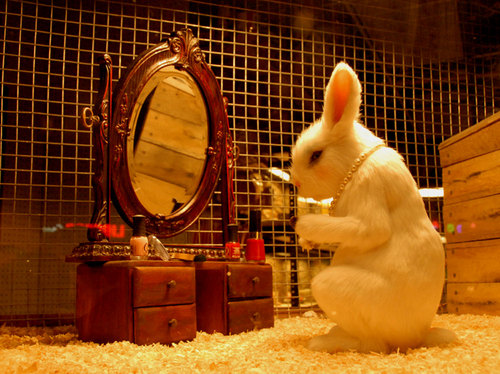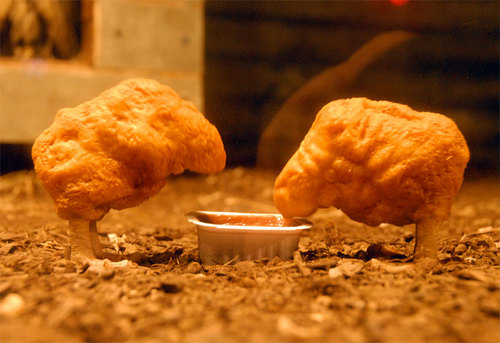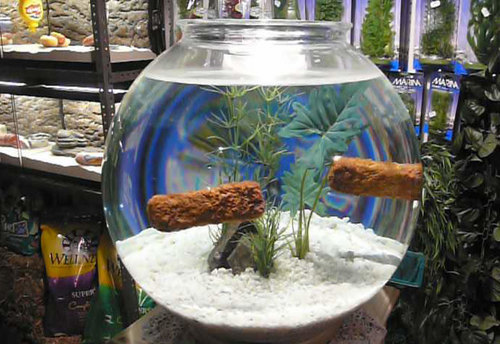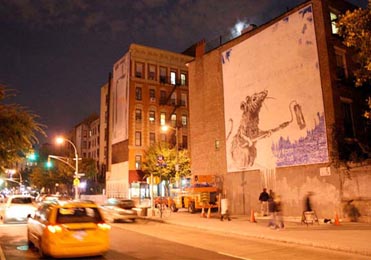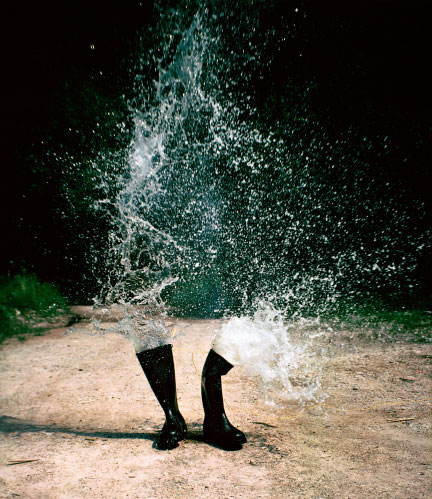Banksy (the only "superstar" artist that I know that has continued to live up to the hype) has recently designed a pet shop that includes fish sticks swimming in a fish tank, a chimpanzee watching chimp porn, sleeping leopard that turns out to be a fur coat, chicken McNuggets sipping barbeque sauce and hot dog hamsters. The Village Pet Store and Charcoal Grill is less than 300 square feet and can't hold more than 20 people at any one time. The inspiration for the show came when Banksy witnessed a chihuahua with a diamond collar being walked passed a homeless person. He wanted to bring forth the question why do we spoil some animals and murder others.
More images from Banksy's Village Petstore show.
Banksy recently put up three giant billboards in the Big Apple. All depicting the NYC mascot, one rat sports an "I heart New York" shirt at the corner of Grand and Wooster, another is found whitewashing the wall at Houston and Macdougal and the last rat at Howard and Broadway is holding a briefcase full of money accompanied with text that reads "Let them eat crack." In a statement Bansky comments, "I wanted to play the corporations at their own game, at the same scale and in the same locations. The advantage of billboard companies is that they'll let you write anything for money, even if what you write is questioning the ethics of letting someone write anything because they have money."

